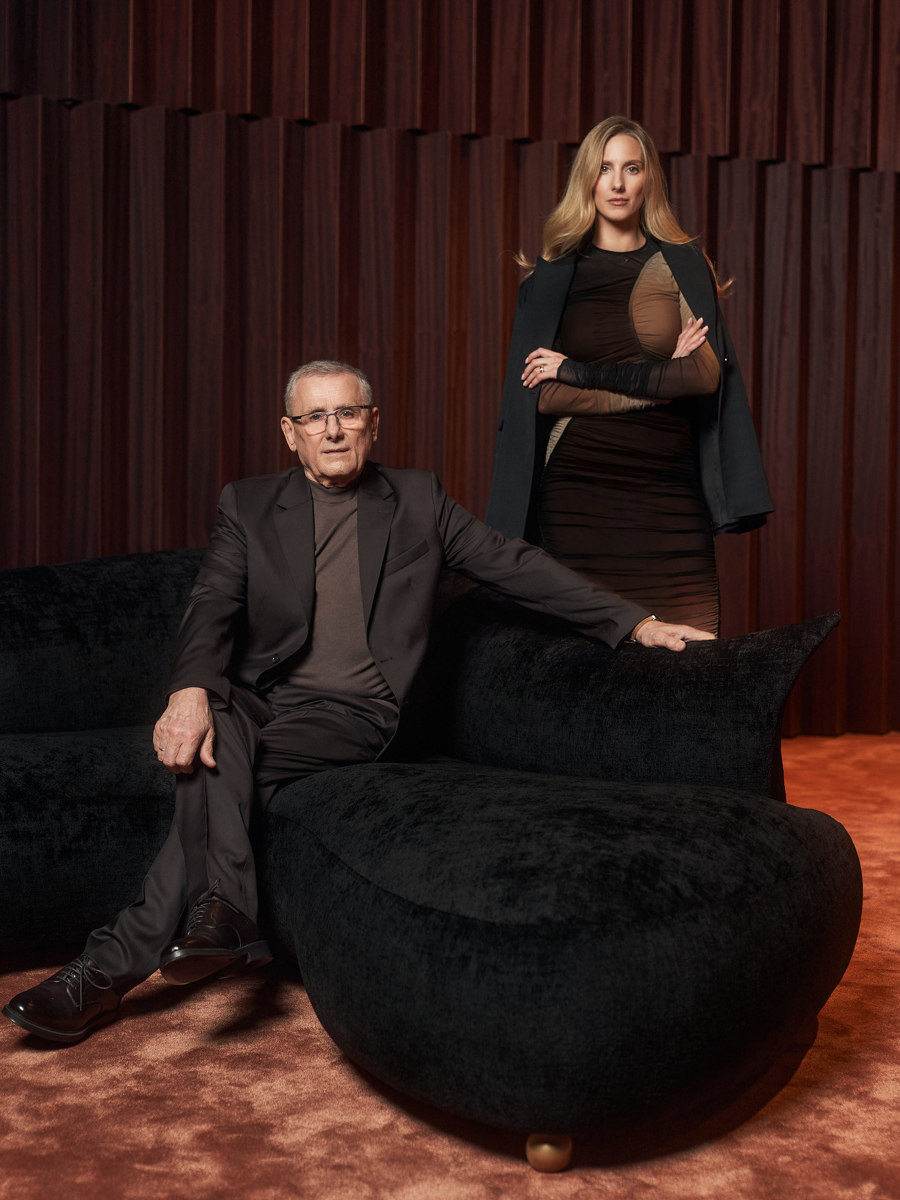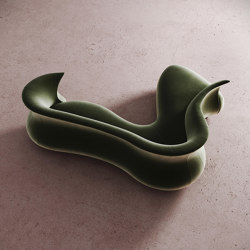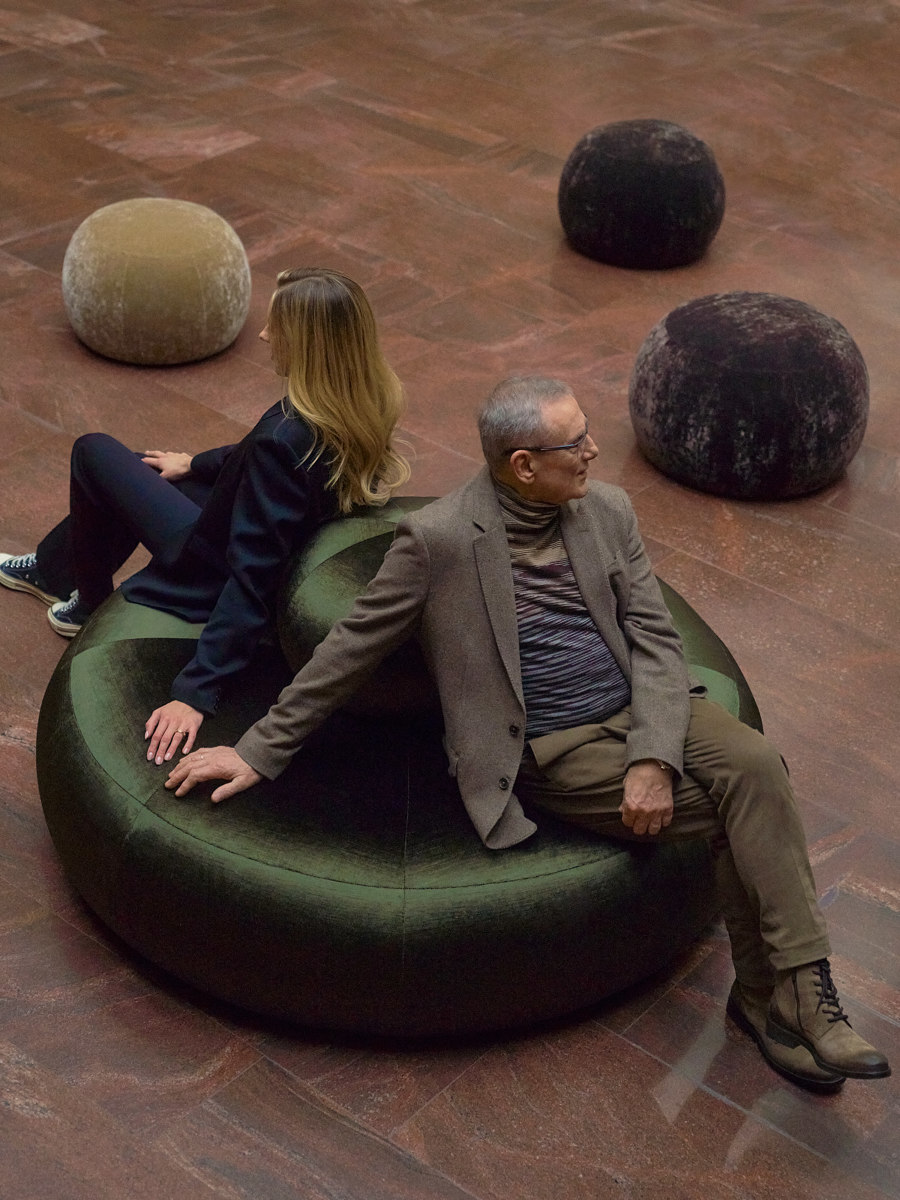Like a force of nature: Desforma's fluid, organic furniture
Historia de la marca de Nick Compton
London, Reino Unido
27.01.23
Lithuanian brand Desforma's sculptural collections may look as if they have sprung into creation naturally, but both meticulous handcraft and a special ‘spheric construction technology’ lie behind them.
Kestutis Spokas and Brigita Marija Spokaite-Norvaise, the father and daughter team behind Desforma’s radical organic forms

Kestutis Spokas and Brigita Marija Spokaite-Norvaise, the father and daughter team behind Desforma’s radical organic forms
×The Desforma range is like nothing else in the design world. Desforma doesn't do reheated mid-century modern or strict straight lines or no-nonsense functionalism in powdered steel. Desforma does swooping, fluid lines and organic curves, sofas composed of sine waves that seem shaped by natural forces and summon up swaying sea life, chairs that might have blossomed into being.
The brand was founded in Lithuania in 1994 by Kestutis Spokas who had returned after time spent in the US, working with designers and other creatives and taking in as much as the 1980s and 1990s art scene could offer, determined to make his own mark in the design world.
Spokas and a team of Lithuanian craftspeople spent years developing Desforma’s unique ‘spheric construction technology’

Spokas and a team of Lithuanian craftspeople spent years developing Desforma’s unique ‘spheric construction technology’
×Furniture in perpetual motion
Spokas wanted to make furniture that could bring a unique energy to a space, forms that seemed almost in perpetual motion, ‘like looking at the fireplace,’ says Spokas' daughter and Desforma's creative director, Brigita Marija Spokaite-Norvaise. Shapes that were ‘dynamic, that you just can’t stop watching.’
Spokas wanted to make furniture that could bring a unique energy to a space, forms that seemed almost in perpetual motion
Spokas recruited Lithuanian craftspeople and makers and spent seven years perfecting the technology and processes to make his vision a practical, commercial reality. ‘It was a long journey,’ he says ‘because the construction had to be strong and durable. That was the hardest part.’
Debuted in 2003, the Amphora collection showcases the potential of Desforma’s structural innovation and handcrafted internal architecture

Debuted in 2003, the Amphora collection showcases the potential of Desforma’s structural innovation and handcrafted internal architecture
×A sculptural force
Spokas and his craftspeople finally perfected what Desforma calls ‘spheric construction technology’ and the invention was certified. Spokas had found a way to make furniture with a kind of sculptural force and uniquely complex, sinuous internal architecture. ‘He has never created anything static,’ says his daughter.
Desforma imagines its design as not just furniture but collectable objects, sculptural forms to be curated and carefully displayed
Spokaite-Norvaise, based in London, grew up around her father's designs and after studying interior design, joined Desforma as Designer and Creative Director in 2009. The company is still proudly a family operation.
The Desforma collection now runs to 13 pieces but Desforma's defining design is perhaps the Amphora collection. Launched in 2003, it was the first to feature the brand's spheric construction. ‘The collection was inspired by the Neolithic period,’ says Spokaite-Norvaise. ‘It follows the shape of an amphora vase. The grace and elegance of the historical piece have been adapted to create this collection.’
Set in open space, Desforma’s sinuous shifting designs are furniture as landscape
Meticulously handmade
Desforma has both private and contract clients but the brand appeals to anyone searching for furniture that can define a space, that becomes a transfixing centrepiece. A piece like the Amphora corner sofa reveals something new from every angle, so the brand’s designs are particularly effective in large spaces where they can be given the space they deserve and create their own kind of soft undulating landscape. Desforma imagines its design as not just furniture but collectable objects, sculptural forms to be curated and carefully displayed.
All of Desforma's designs are still meticulously handmade in Lithuania. Frames are hand carved, no ‘CNC milling or 3D printing’ says Spokaite-Norvaise, proudly. She describes their internal skeletons as a ‘jewellery piece consisting of a thousand details’. Spokaite-Norvaise insists though that comfort is never sacrificed for fluid form-making. ‘Despite the dynamic design, the collection has a backrest that was shaped to follow the curve of the human back.’
The Desforma collection now runs to 13 pieces with all production still based in Lithuania
If Desforma’s designs make a strong aesthetic statement, they are also human shaped, they create social space. The sofa’s curves pull people together in a protective huddle, creating an intimate energy. For all their eye-catching drama, these are pieces designed to be engaged with, to enjoy and to love having around.
© Architonic
Head to the Architonic Magazine for more insights on the latest products, trends and practices in architecture and design.

















